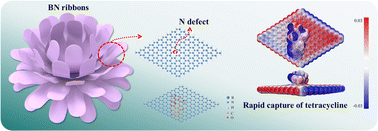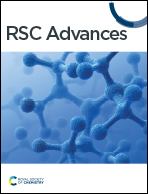The engineering of defect-modified boron nitride ribbons: an effective adsorbent to rapid capture for tetracycline
Abstract
Antibiotics, the persistent organic pollutants, have brought serious pollution to the aquatic environment. Therefore, it is necessary to select rapid adsorbents to remove them from their long-term threat. Herein, the introduction of defects in BN was employed to enhance its surface chemical activity for rapid capture of tetracycline via hydrothermal and calcination methods. The defect content in BN can be controlled by adjusting the volume ratio of ethanol to water. Among them, when the volume ratio of H2O/ethanol is 4/1 (BN-3), BN-3 has the most N defects at 33%, which increases the adsorption rate of h-BN for TC and promotes the adsorption capacity to 302.15 mg g−1, which is due to the introduction of nitrogen defects significantly regulates the electronic structure of BN. The corresponding theoretical calculations confirm that BN with N defects decreases the absorption energy of BN for TC. Additionally, the adsorption removal rate of tetracycline still reached 95.5% after 5 cycles of TC adsorption by BN-3, indicating that the defect-modified BN has good reusability and is beneficial for its use in pollutant adsorption.



 Please wait while we load your content...
Please wait while we load your content...